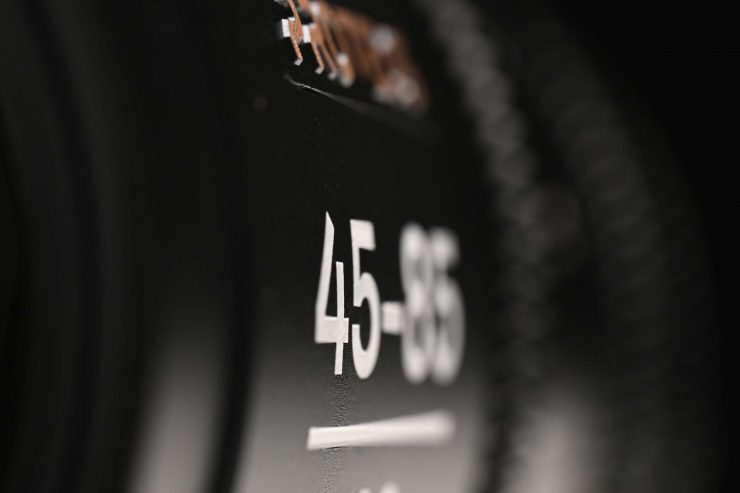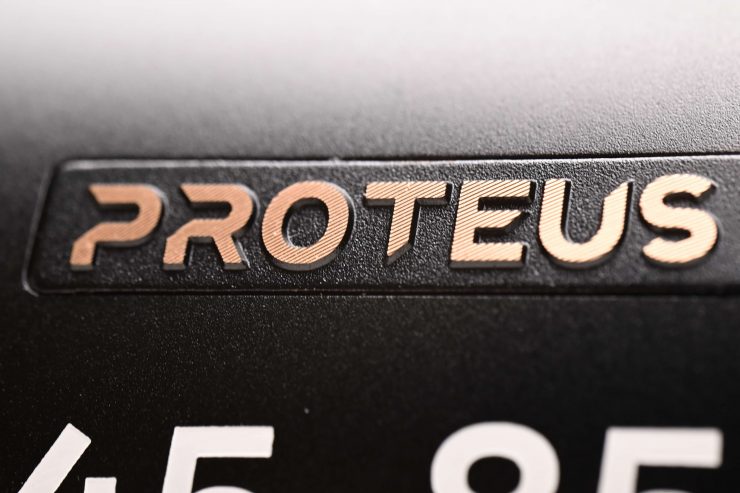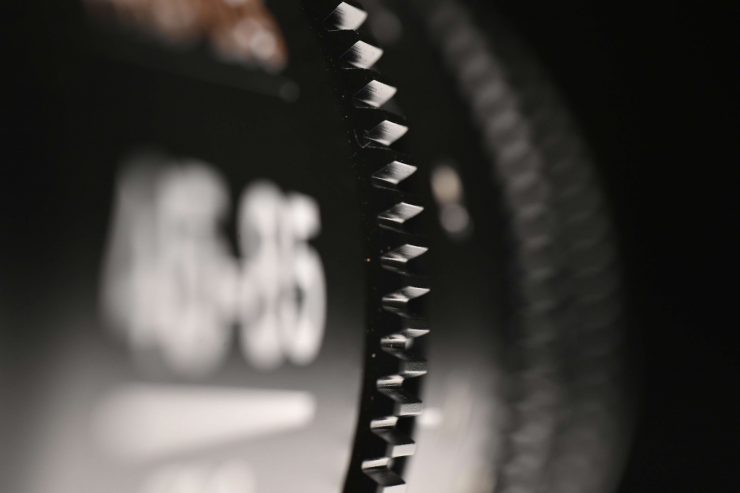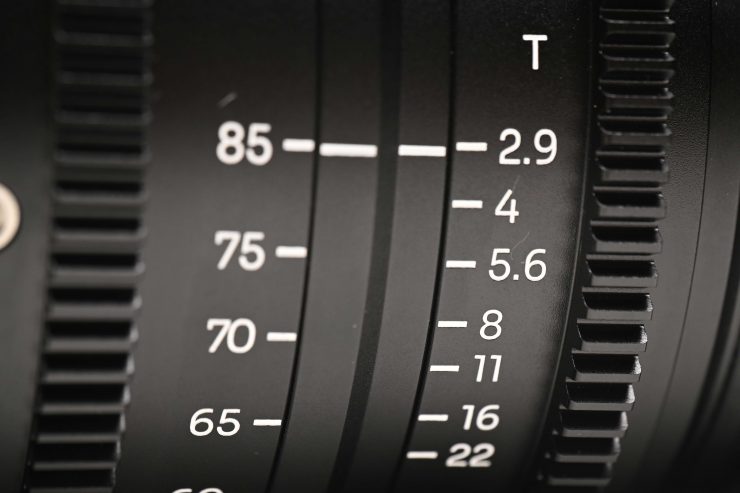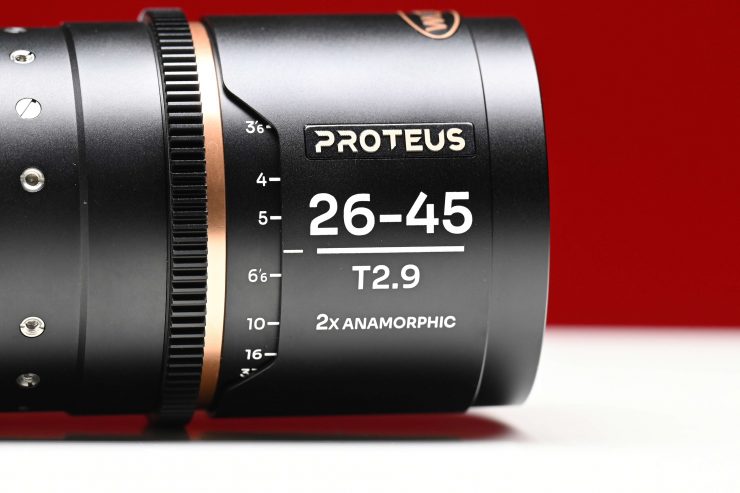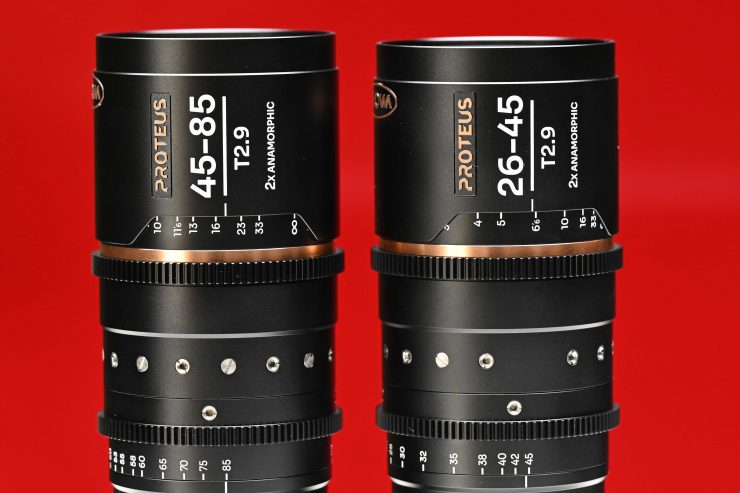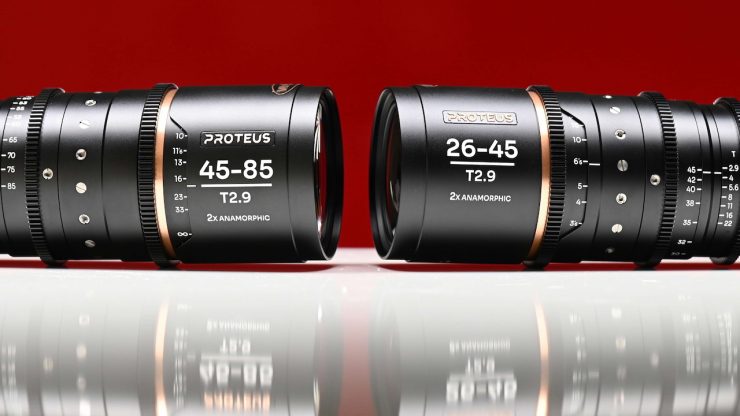
Laowa has announced its new Proteus 26-45mm T2.9 and 45-85mm T2.9 2x anamorphic zooms.
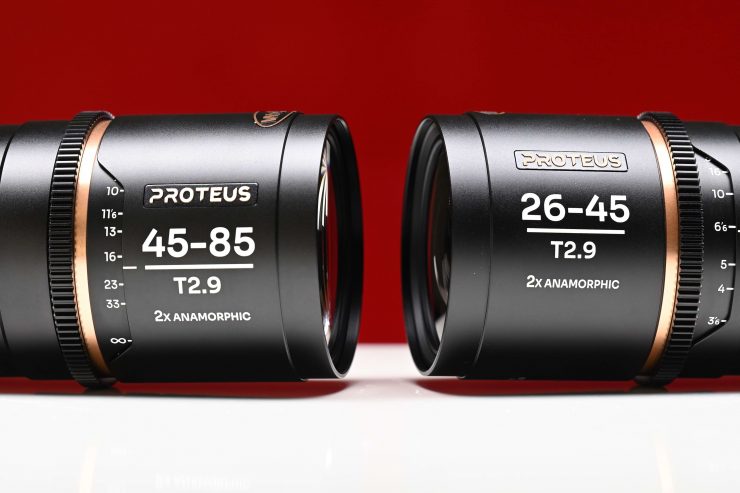
These two new zooms now join the Proteus 2x anamorphic primes which consist of 6 focal lengths (with two more to come). Just like the primes, the Proteus zooms cover S35 sensors. By using an optional 1.4x full-frame expander adapter, the Proteus zooms can also cover a full-frame sensor.
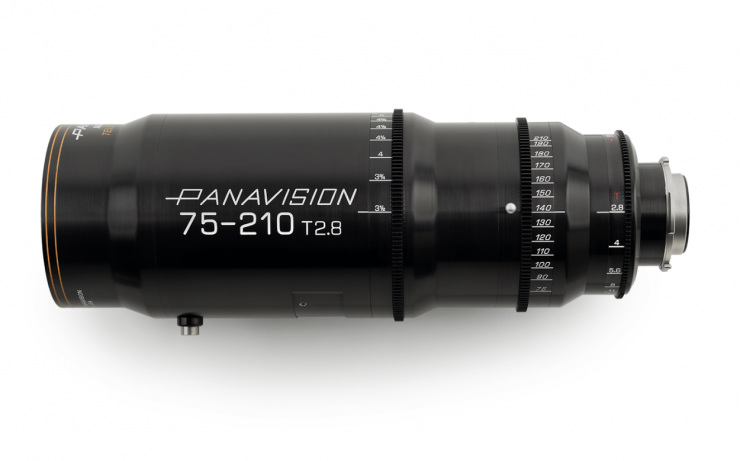
2x anamorphic zooms are few and far between. There are very few options available. Panavision offers a variety of 2x-squeeze anamorphic zooms, covering focal lengths from 37mm to 550mm. There are also older lenses such as the LOMO 40-120mm T3.1 Front-Anamorphic Zoom and if you wanted something newer, the Angenieux Optimo Anamorphic 56-152mm Zoom.
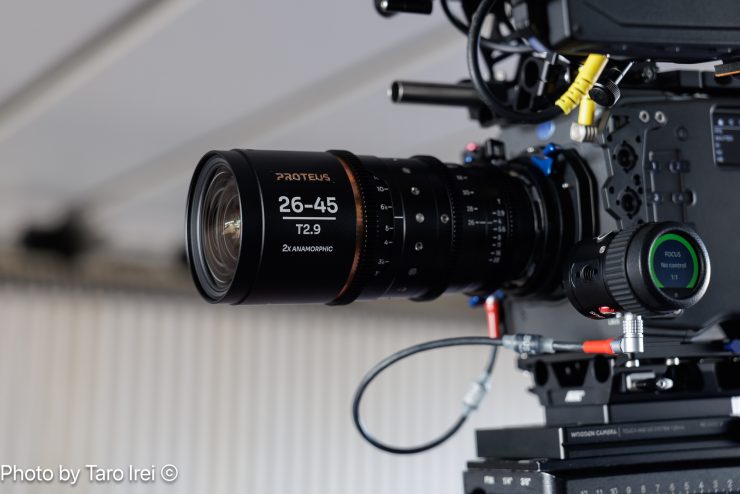
I was lucky enough to get early access to the two new Laowa anamorphic zooms to put them through their paces.
Overview
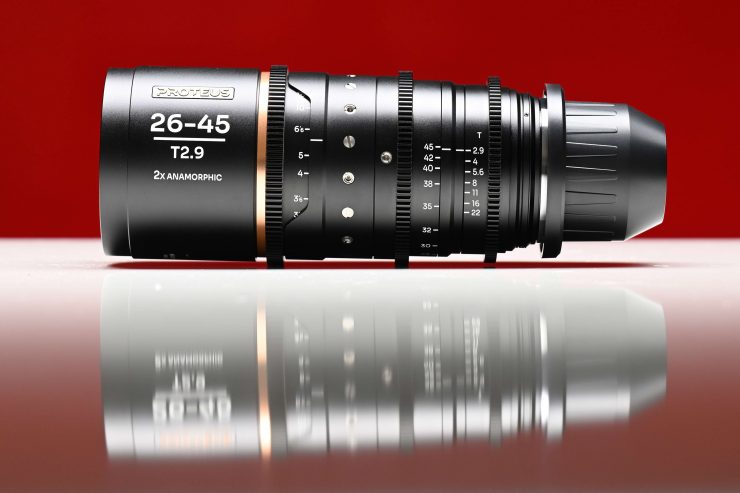
These lenses are very interesting due to their compact form factor, with the ability to produce classic anamorphic characteristics such as oval bokeh and cinematic flaring.

According to Laowa, just like the primes, their excellent sharpness allows the set to be used on a variety of productions such as commercials, music videos, and feature films, without the caveats that you can experience with more affordable anamorphic lenses.

The lenses will be available in PL mount, with an additional interchangeable EF bayonet included in the case.
At under $6,000 USD each, you may not classify these lenses as affordable, but for 2x anamorphic zooms, they are very affordable. To put the price in perspective, the Angenieux Optimo Anamorphic 56-152mm Zoom Lens costs $56,333 USD.
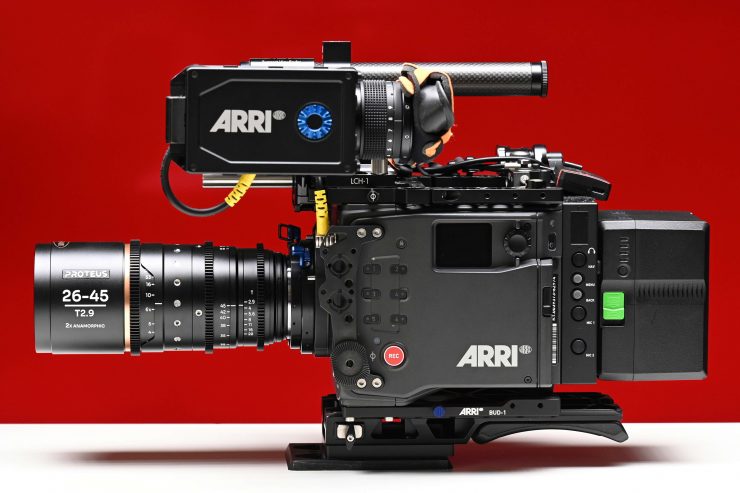
The lenses will cover an image circle diameter of 31.9mm which is slightly larger than the 25.92mm that the Proteus primes cover.
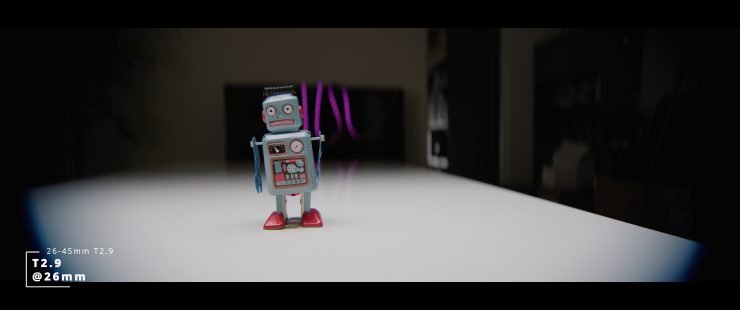

Native aspect ratio 
Cropped for 2.39:1
On certain cameras when shooting open gate you will get some vignetting at the edges of the frame with the wider focal lengths, but if you are framing for 2.39:1 then that mostly disappears. When shooting 4.6K Open Gate on the ARRI ALEXA 35, I did find that you do get some corner vignetting at wider focal lengths, but that is mainly due to the fact that the sensor is slightly larger than S35. You do certainly get edge and corner sharpness when shooting on wider focal lengths and that is something you also need to consider carefully.
Key features
- The Lightest & Most Compact 2x Front Anamorphic Zooms for S35 sensors
- Over 3x Zoom Range Across 2 lenses (26-85mm)
- Constant T2.9 Aperture Across Zoom Range
- Excellent Sharpness even at T2.9 Wide Open
- Parfocal design
- Expressive Anamorphic Look
- 3 Cinematic Flare Options (Amber/Blue/Silver)
- 11 Aperture Blades for Smooth Oval Bokeh
- Mild/Well-Controlled Distortions
- Constant 2x Squeeze
- Low Focus Breathing
- PL Mount Available in Default (Canon EF interchangeable mount bayonet
- included)
- Optional RF/E/L mount bayonets are available for purchase on website
- Min. Focusing Capability up to 50cm / 1’7″
- Ergonomic & Intelligent Cine Housing
- Ø77mm Filter Thread
- Dual Scale Design (Imperial & Metric)
- 270° Focus Throw
- Compact Housing (~3.3 lbs/1.5kg & ~20mm in length / <1 inch)
Concept
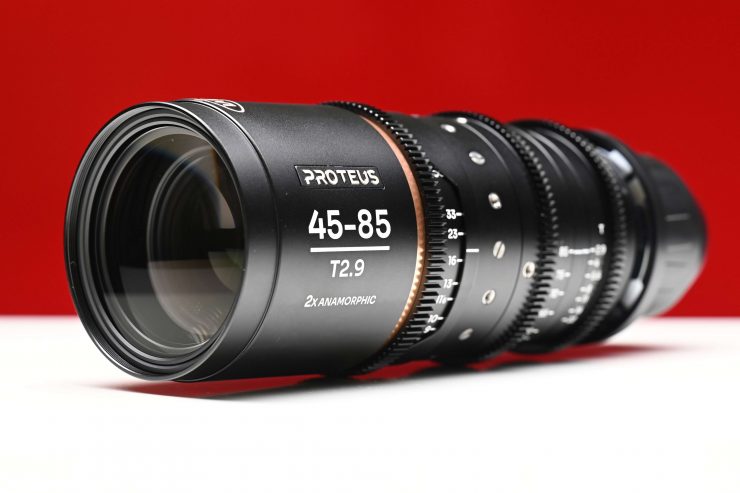
According to Laowa, the Proteus 2X Anamorphic zooms were designed to be the most accessible professional anamorphic zooms for Super35 sensors with a constant 2X squeeze ratio. The Proteus Series is said to exhibit classic anamorphic characters with modern image quality.
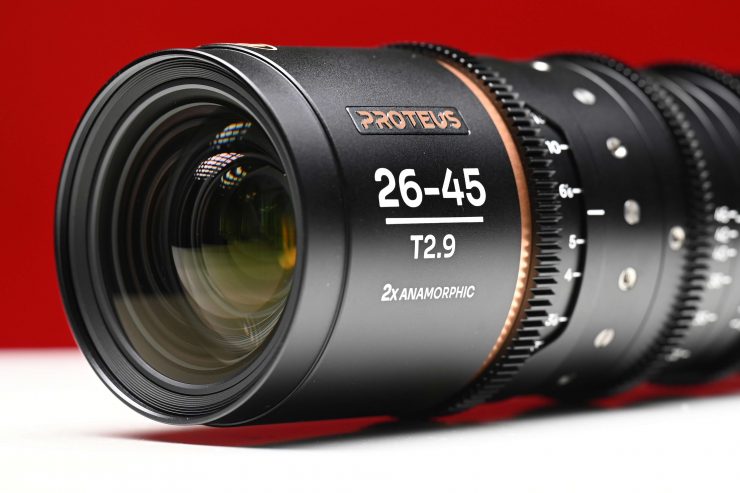
They are claimed to feature smooth elliptical bokeh and signature flares including blue, amber, and silver options.
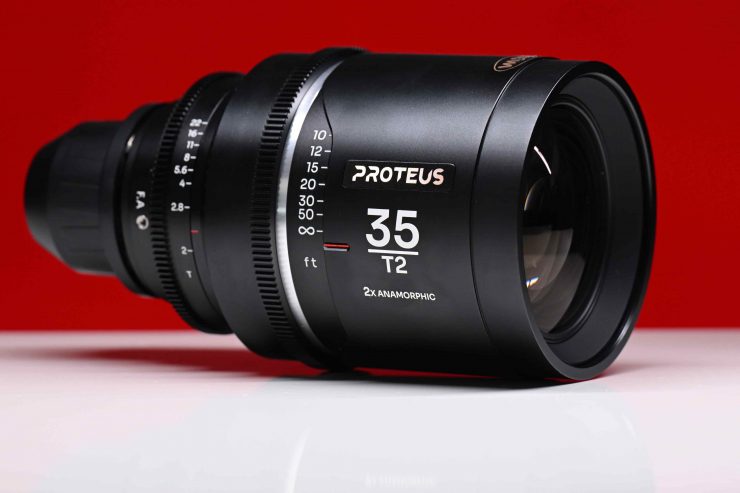
With 8 prime lenses already announced and two zooms, you don’t have to worry about buying a lens and then wondering if any more focal lengths will appear. Laowa has come up with a very comprehensive 2x anamorphic series that covers both primes and zooms. The only thing that is arguably missing is a longer focal length anamorphic zoom.
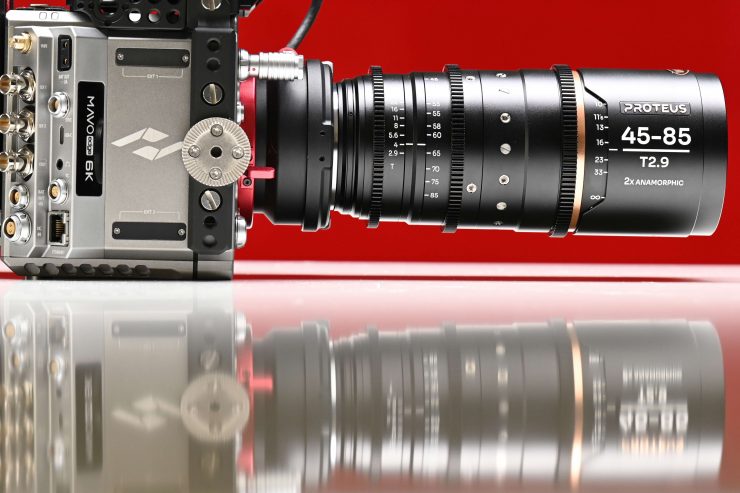
I think it would be fair to say that Laowa is trying to attract owner/operators of mid to high-end digital cinema cameras that are capable of shooting in open-gate anamorphic modes. In saying that, there is no reason why they wouldn’t also find themselves in a lot of rental houses, especially given the limited options available when it comes to 2x anamorphic zooms.
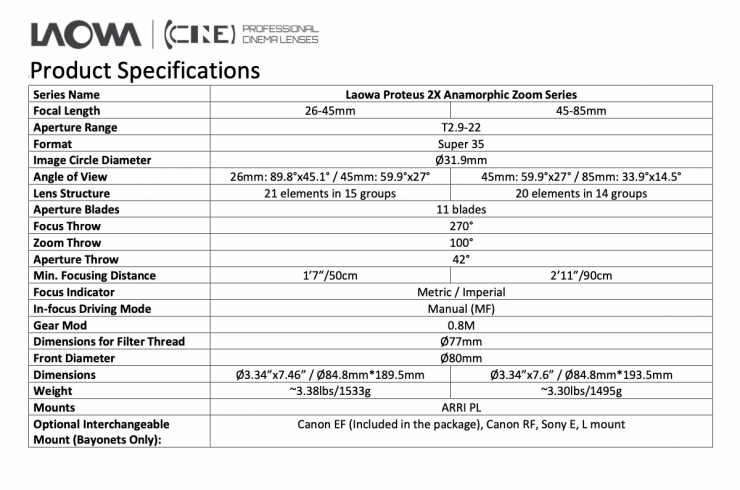
As I mentioned earlier, the zooms are only available in PL mount, but they also come with a user-interchangeable EF mount and you can purchase optional RF/E/L mounts.
Size & Weight
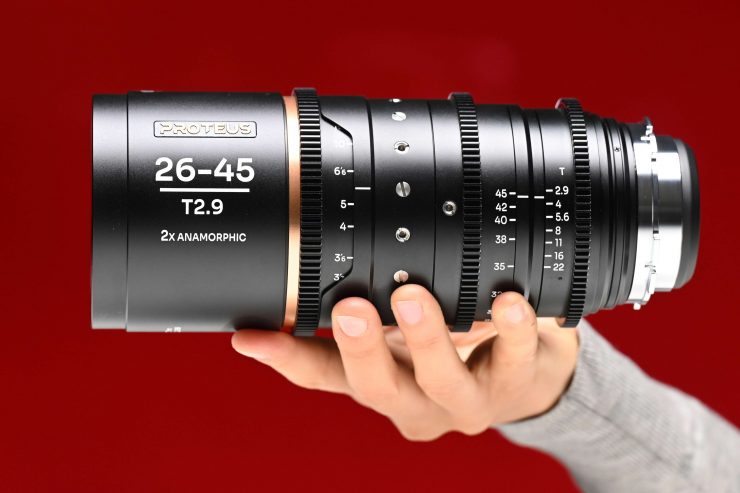
Unlike the Proteus primes, the zooms are reasonably lightweight and compact given their focal range and constant T-stop. They have the following weights:
| WEIGHT | |
| Laowa Proteus 26-45mm T2.9 | 1.53kg / 3.38 lbs |
| Laowa Proteus 45-85mm T2.9 | 1.49kg / 3.30 lbs |
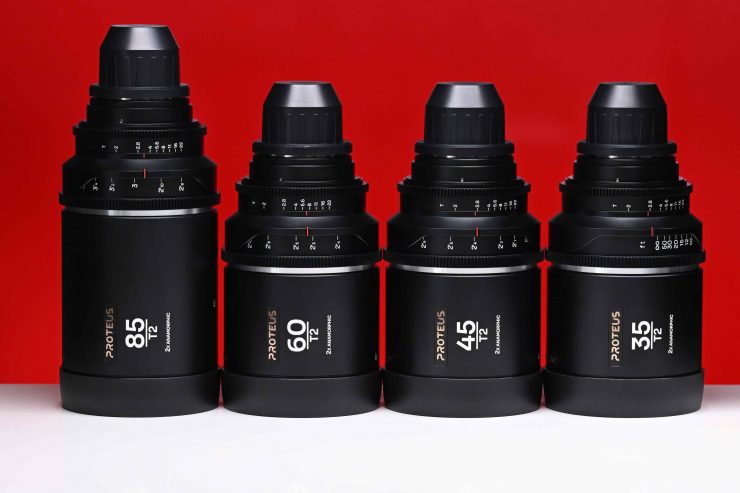
As. a comparison, the Proteus primes weigh between 2.4kg / 5.3 lbs to 2.95kg / 6.5 lbs.
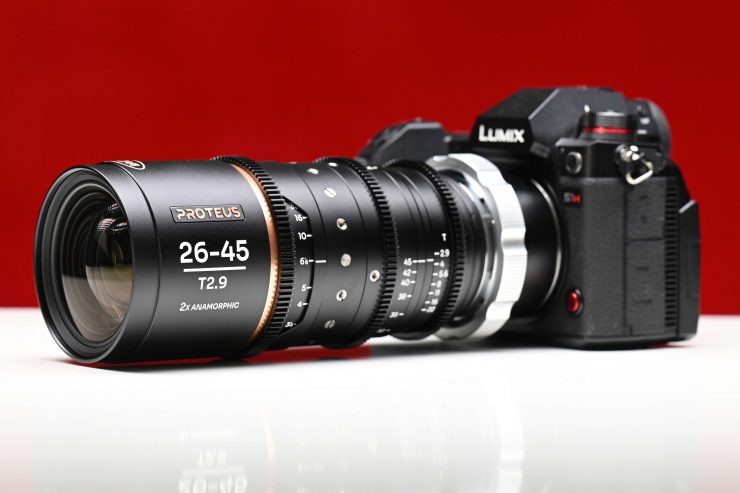
While you could use them on smaller-sized digital cinema cameras or mirrorless hybrids, the lenses are certainly better suited for use with mid to large-sized digital cinema cameras.
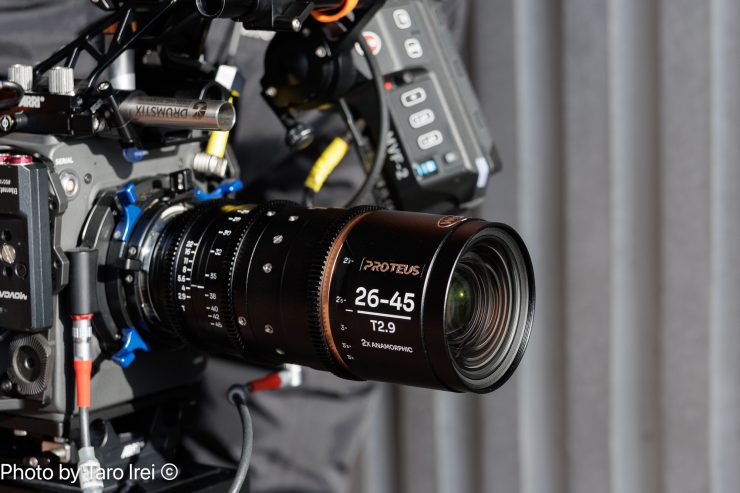
So how does that weight compare to a couple of other 2x anamorphic zooms? Well, below you can see:
| WEIGHT | |
| Panavision 37-85mm T2.8 | 6.35 kg / 14 lb |
| Panavision 40-80mm T2.8 | 4.71 kg / 10.4 lb |
| LOMO 40-120mm T3.1 | 7.5 kg / 16.5 lb |
| Angenieux Optimo Anamorphic 56-152mm T4 | 2.2 kg / 4.85 lb |
| Cooke 35-140mm Anamorphic/i Zoom Lens T3.1 | 10.25 kg / 22.6 lb |
| ARRI Anamorphic Ultra Wide Zoom AUWZ 19-36/T4.2 | 5.5 kg / 12.1 lb |
As you can see, the weight of the Proteus zooms is pretty good.
Build Quality
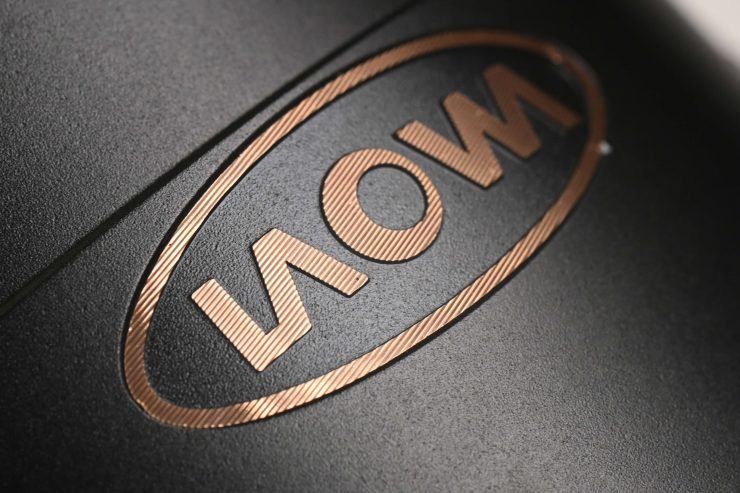
The Proteus 2x Anamorphic zooms are well-made and constructed.
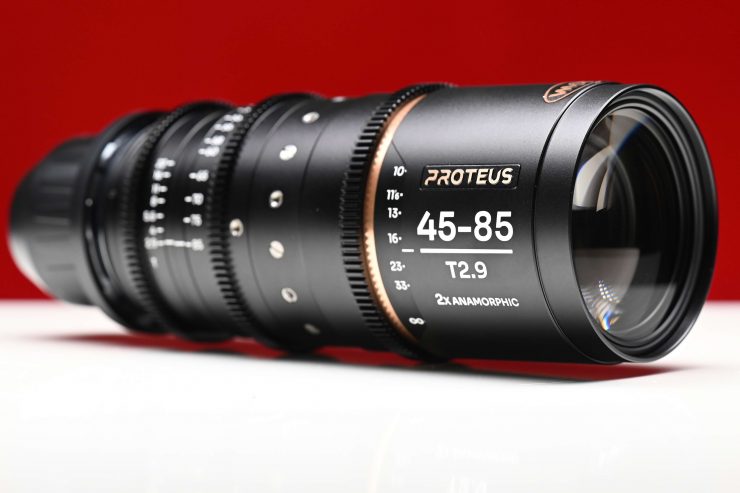
Just like the primes, they feature a rather understated design which I personally like.
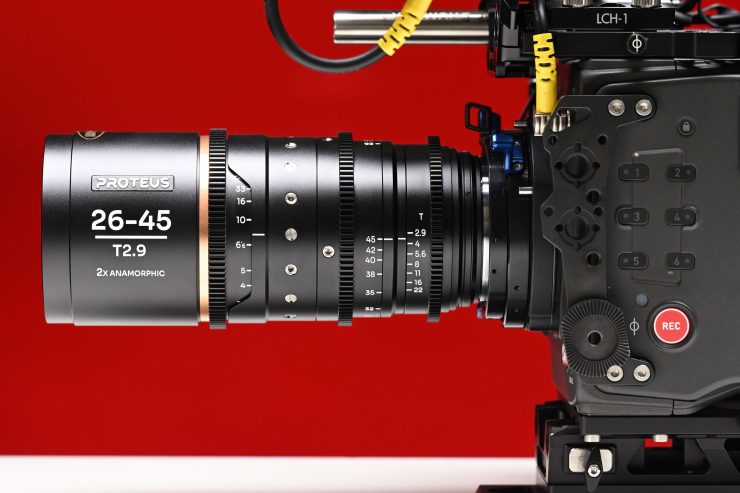
What I am always looking for when it comes to sets of lenses is how consistent the mechanics and look are. Good lenses maintain very high levels of consistency across the focal ranges. With a lot of the more ‘affordable’ lenses that I have reviewed over the years the thing that normally lets them down is consistency when it comes to the mechanics, build quality, and look. If you are a lens manufacturer and want a seat at the big boys’ table then you need to be able to deliver lenses that have consistency, especially if you have both zooms and primes in a series.
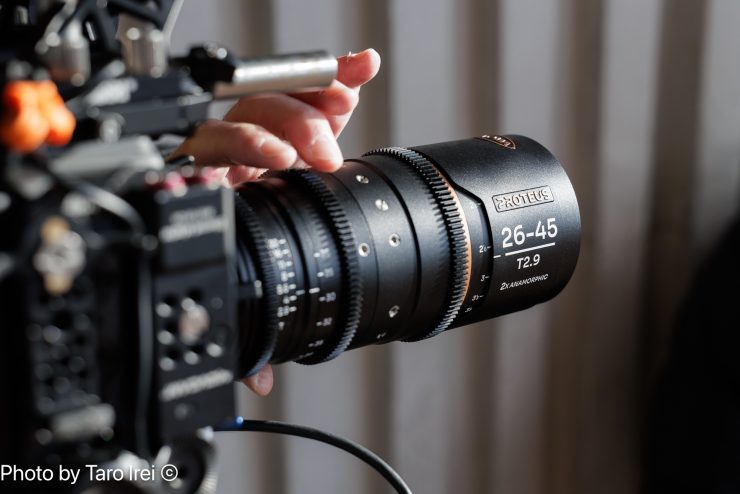
The mechanical consistency of the Proteus 2x Anamorphic zooms was good. The focus, zoom, and aperture rings were all well-weighted and smooth.
Markings
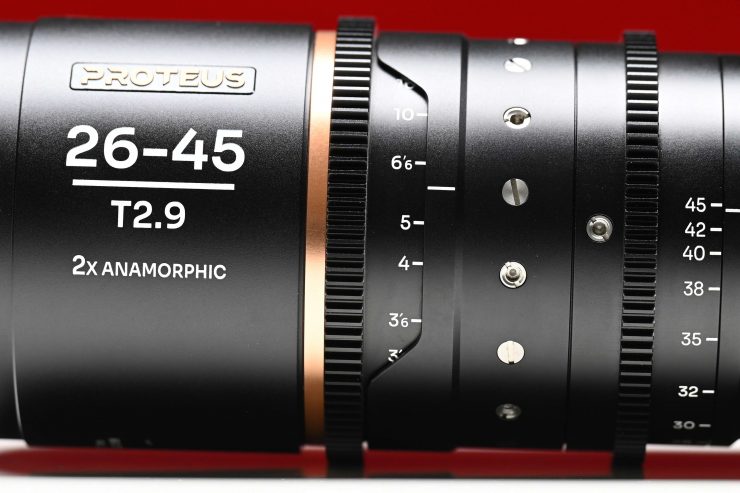
Just like the Laowa Proteus primes, the zooms come in either Imperial or Metric focus markings. You can, however, change them over if need be.
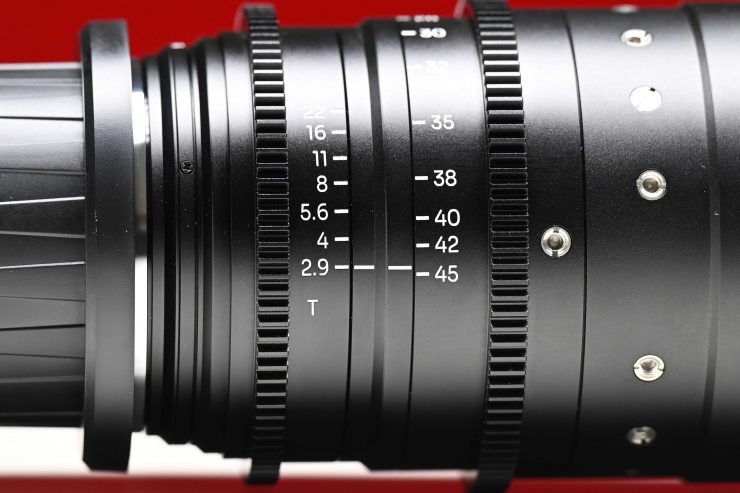

Proteus Zooms 
Proteus Zooms 
Laowa Proteus Primes 
Laowa Proteus Primes
The markings are reasonably easy to see, however, I am not sure why Laowa didn’t keep the clear and concise red markings from the Proteus primes that let you easily see exactly what T stop or focus distance you are at.
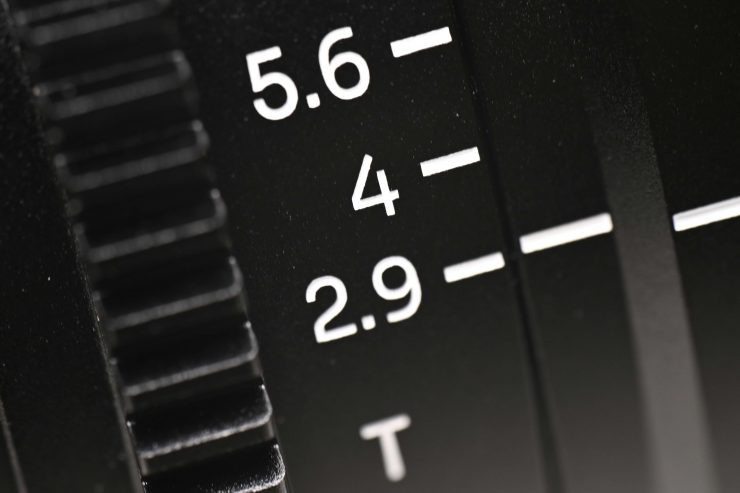
The markings all line up correctly which is nice to see.
Back Focus Adjustment?
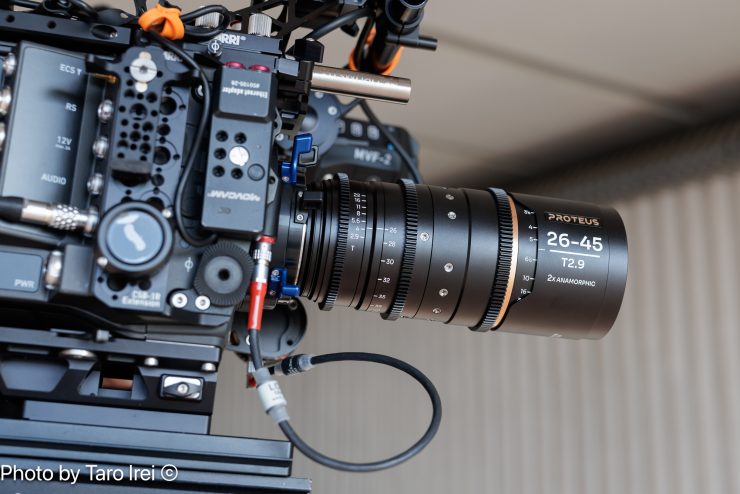
One of the nice features of the Proteus Primes is that they feature a back-focus adjustment which can be adjusted with the lens mounted on a camera. The Proteus zooms feature a similar back-focus adjustment where you need to loosen three small screws.
Back focus, which can also be referred to as focal flange length, is the distance between a camera’s sensor and the rearmost element of the lens. Adjusting back focus is especially important if you are changing over lens mounts. Usually, this is done through the painstaking task of using shims. I would highly recommend that if you have to use shims to change the back focus on an anamorphic lens, take it to a lens technician at a reseller/rental house. Adjusting the back focus shim stack on anamorphic lenses will adversely affect the optical performance and introduce astigmatism to the lens.
Instead of having to do this with the Proteus series you can use the back focus adjustment on the lenses to do this instead. This is as simple as loosening three screws with the included Allen key and then moving the rear barrel.
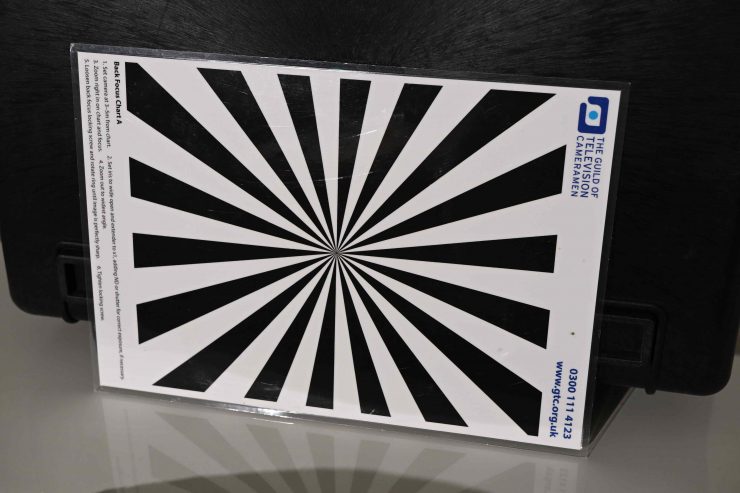
The best way to adjust back focus is to put your camera on a tripod so that it won’t move around. Then frame up a focus chart or any solid object if you don’t have access to one. Now the distance at which you place your focus chart away from the lens depends on the focal length of your lens. If it is a wide focal length, then 6′ / 183cm or so will usually work. If you are using longer focal lengths then that could be up to 20’/ 6m.
It is important that when doing a back focus adjustment that the lens you are using is wide open. In the case of the Proteuszooms, you want them at T2.9. If you have an EVF or monitor, it’s best to turn down the brightness and turn up the contrast so you can clearly see what you are doing.
You then focus the lens until it looks as sharp as it will get and then you loosen the back focus and adjust it till you get the sharpest image. Once you have done that then you tighten up the screws, but you need to make sure that you don’t move it when you do this.
This is a really good feature on the Proteus zooms and it makes it easy for a user to adjust the back focus. With lenses that you have to remove and add shims, I highly recommend that you get someone at a rental house or other facility to do this.
Anamorphic Design
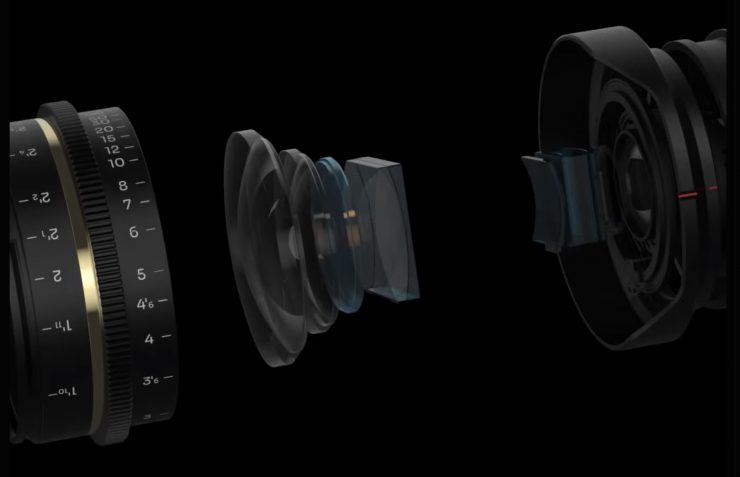
The Laowa Proteus 2X Anamorphic Series features a front anamorphic design.
Optical Construction
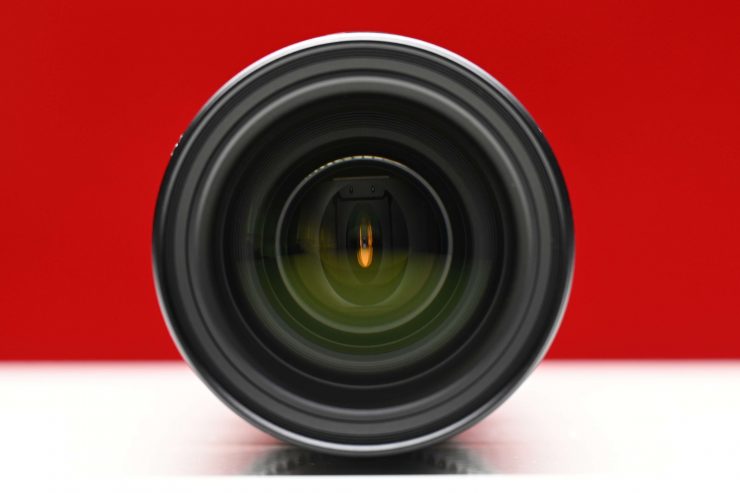
Both the zooms feature 11 aperture blades. The Proteus 26-45mm T2.9 has 21 elements in 15 groups and the 45-85mm T2.9 has 20 elements in 14 groups.
Constant 2X squeeze ratio
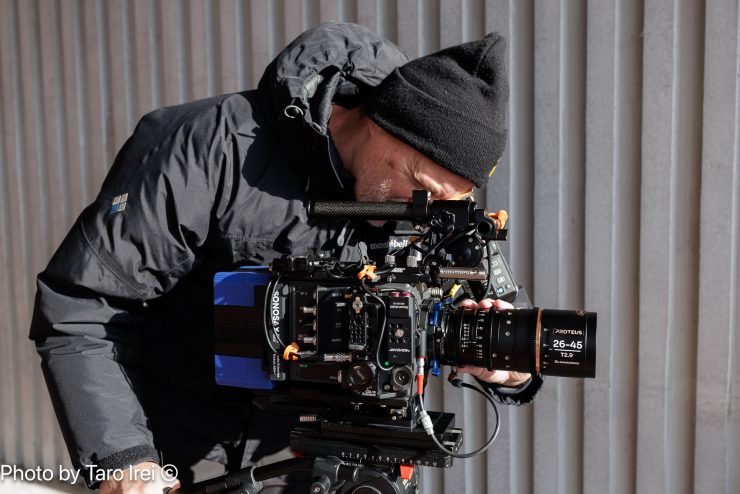
The 2X squeeze ratio allows you to create the classic wide-screen anamorphic look and it pairs well with 4:3 or 6:5 sensors which are usually defaulted in professional cinema cameras to deliver a 2.66:1 or 2.4:1 image after de-squeeze. You can also crop to a 2.39:1 with minimal loss of resolution.
On cameras like the ARRI ALEXA 35, you can also shoot in a 2.7K 8:9 recording mode that allows you to use 2x anamorphic lenses to create a 16:9 UHD image. This is very handy if you want to want to shoot with an anamorphic, but still deliver a 16:9 image that meets the streaming mandates.
With the optical design, the 2X squeeze ratio can be achieved at any focus distance. Laowa also states that the lenses maintain the relative shape of the object and avoid anamorphic mumps. I will test this further down in the review.
Close Focus
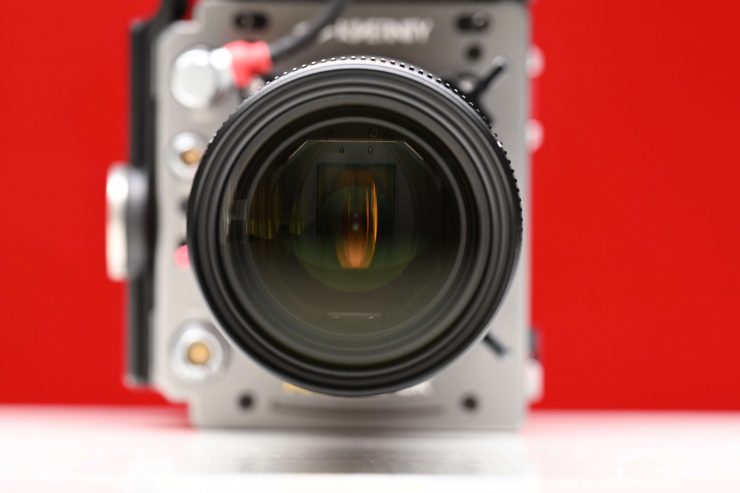
You can see the minimum focus distance for the Laowa Proteus zooms below:
| Minimum Focus Distance | |
| 26-45mm T2.9 | 1.64′ / 50 cm |
| 45-85mm T2.9 | 2.95′ / 90 cm |
The minimum focus distance is pretty good for a 2x anamorphic. How does this compare to some other 2x anamorphic zooms? Below you can see:
| Minimum Focus Distance | |
| Panavision 37-85mm T2.8 | 2.75′ / 83.82cm |
| Panavision 40-80mm T2.8 | 3.25′ / 99cm |
| LOMO 40-120mm T3.1 | 3.25′ / 99cm |
| Angenieux Optimo Anamorphic 56-152mm T4 | 2.08′ / 63.69cm |
| Cooke 35-140mm Anamorphic/i Zoom Lens T3.1* | 3.93′ / 120cm |
| ARRI Anamorphic Ultra Wide Zoom AUWZ 19-36/T4.2 | 2′ / 60cm |
Flare Options
As I mentioned earlier, the lenses are available in either blue, amber, or neutral silver flare color options. If you are looking for something with a more neutral flare then the silver flare option will change color according to the light source.
Other Features
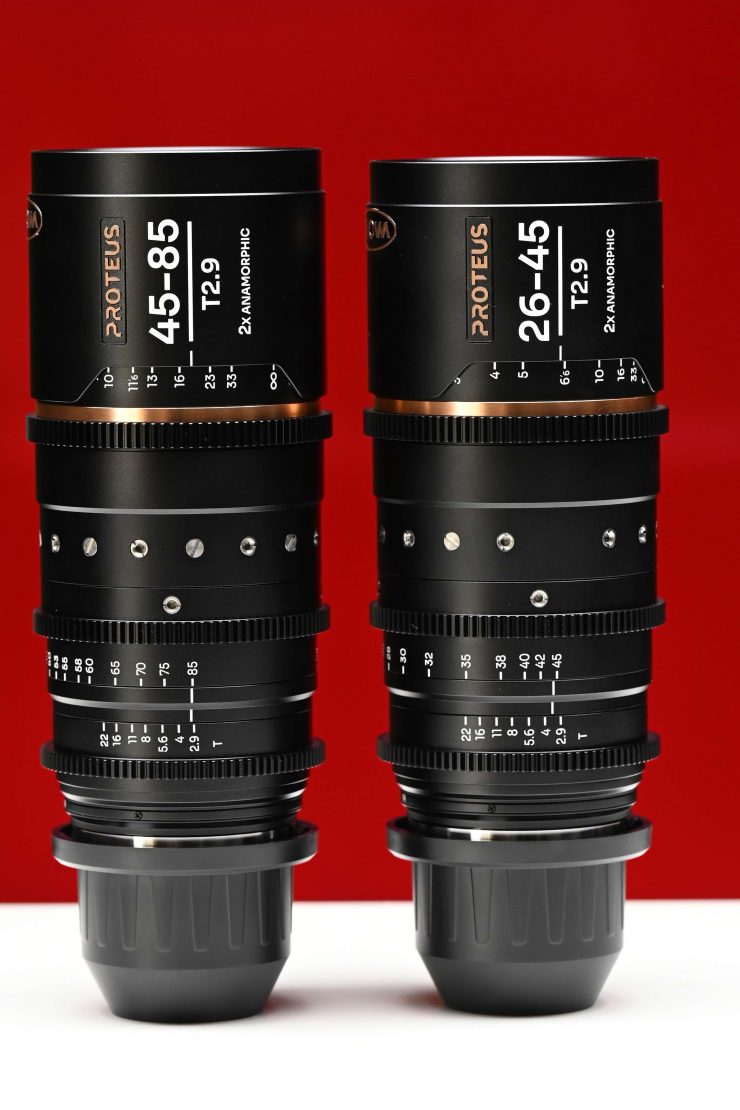
Both of the zooms feature unified gear positions so that they can be switched quickly between focal lengths to work with the same set of gears.
They also all have a back focus adjustment mechanism that I mentioned earlier in the review so that you can calibrate the back focus with the lens mounted on the camera directly without going through a tedious shimming process.
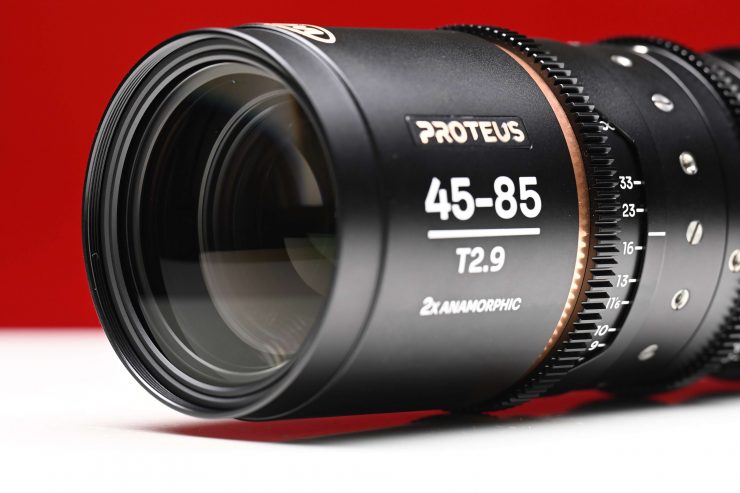
The Proteus zooms feature an Ø 80mm front diameter and a Ø 77mm front filter thread. As a comparison, the Proteus primes have a Ø 114mm outer diameter and a Ø 105mm filter thread.
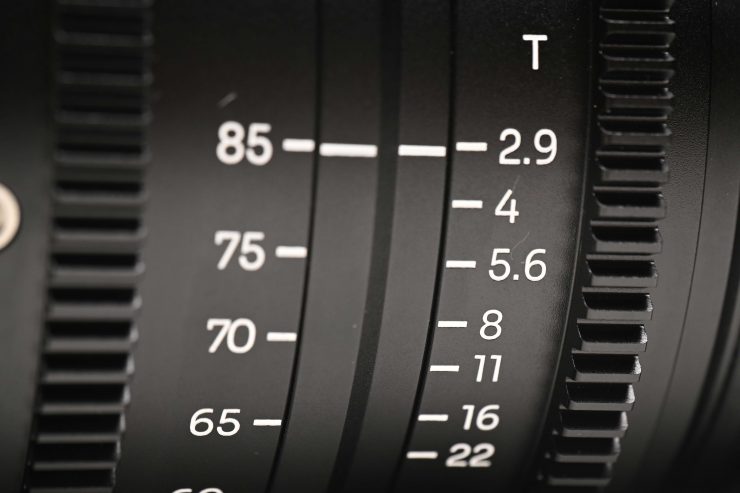
The focus throw is 270 °, the zoom throw is 100 °, and the aperture throw is 42 °.
Why were anamorphic lenses made?
What you may not know is that anamorphosing optics was developed by Henri Chrétien during World War I to provide a wide-angle viewer for military tanks. The optical process was called Hypergonar by Chrétien and was capable of showing a field of view of 180 degrees. After the war, anamorphic lenses for cinema were originally designed so that wide format imagery would fully utilize the film area of a standard 35 mm frame. The lenses also enhanced vertical resolution and reduced the appearance of grain. The technology was first used in a cinematic context in the short film Construire un Feu in 1927 by Claude Autant-Lara. The introduction of the Super 35mm format made the difference between anamorphic and spherical lenses a lot less obvious. This is because Super 35 provided more horizontal film area, as it didn’t have to record the audio next to each frame, as was the case with standard 35mm film.
Why shoot anamorphic?
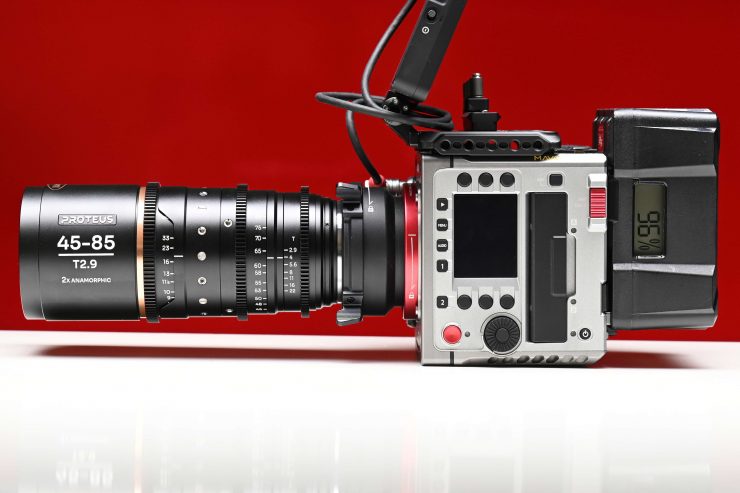
With a lot of anamorphic lenses, you are going to see image imperfections, but this is what makes anamorphic lenses so special. With modern-day cameras and sensors being so good, a lot of DPs want to try and add character through the use of vintage or/and anamorphic lenses. Image characteristics when shooting with an anamorphic lens include the bokeh taking on the appearance of being oval-shaped as opposed to circular, and flares appear as bluish horizontal or vertical streaks that can span across the entire picture. The other characteristic associated with anamorphic shooting is the widescreen aspect ratio.
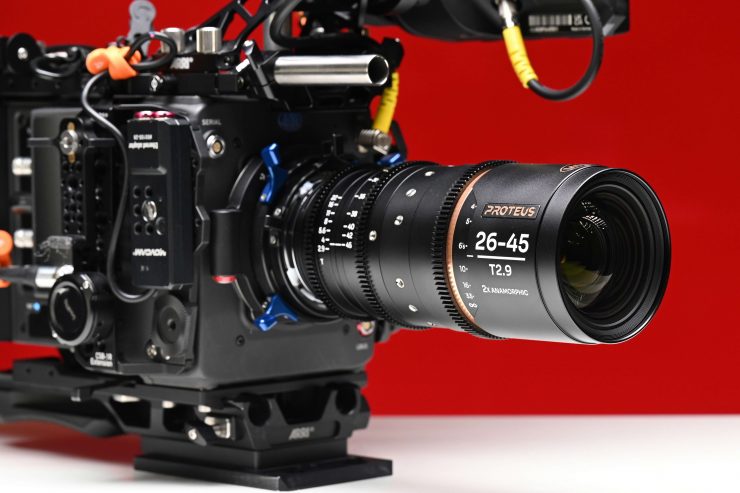
If you are working in HD or 2K formats with spherical lenses, you could just crop your 2K frame to get a 2.39:1 ratio, right? Yes, you could, but the problem is you are left with just 858 lines of vertical resolution. Anamorphic lenses provide a way to capture a 2.39:1 ratio without having to make that sacrifice in resolution. Of course, you can also capture at higher resolutions (4K, 6K, 8K, etc.) and then deliver in a lower resolution as well.
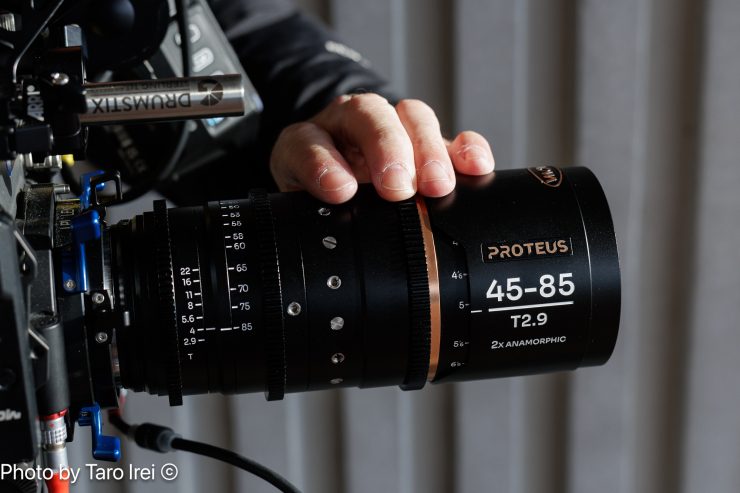
2x anamorphic lenses produce a super-wide 3.55:1 ratio. To produce a traditional 2.39:1 ratio with a 16:9 sensor, a 1.33x or 1.35x anamorphic lens is needed.
Anamorphic certainly isn’t for everyone
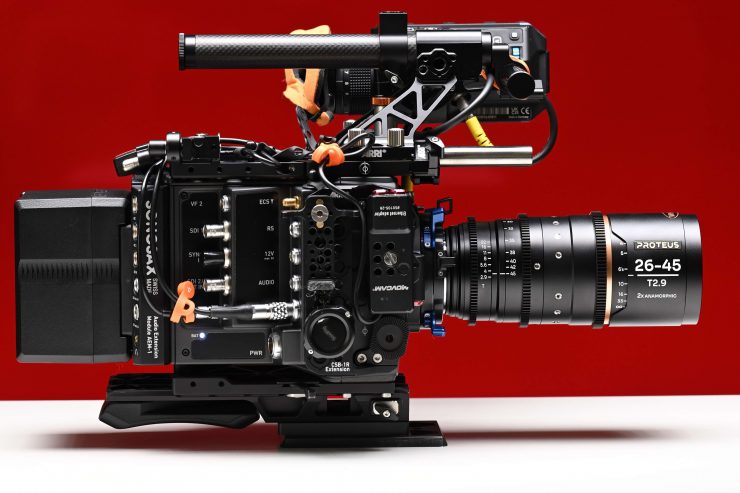
As the old saying goes, just because you can, doesn’t mean you should. Anamorphics aren’t for everyone and they certainly aren’t suitable for a lot of projects. The very nature of their aspect ratio makes them difficult to use for a lot of content you may want to shoot. TV broadcasters often want a native 16:9 aspect ratio as they don’t want to have black bars below and above the image shown on their viewer’s screens. A lot of DPs would love to shoot anamorphic or even in a wider aspect ratio, but this is normally vetoed by the network. Because the anamorphic-scope camera format does not preserve any of the images above and below the scope frame, it may not transfer as well to narrower aspect ratios, like the commonly used 16:9 for full-screen television.
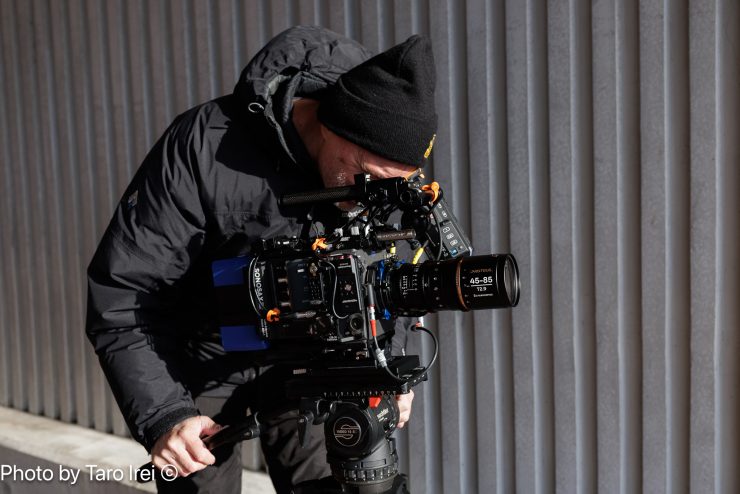
You also need to take into account that the depth of field is also affected when shooting anamorphic-ally. Technically anamorphic and spherical lenses have the same depth of field, but in real-world use, you have to use a longer focal length with an anamorphic in order to achieve the same angle of view. This means at the same magnification (for example using a 35mm focal length), anamorphic lenses produce a shallower depth of field. As we all know, (whether you agree or not) the “cinematic” look is often associated with a shallower depth of field.
Reasons for not shooting anamorphic can include:
* Most anamorphic lenses can create artifacts or distortions
* Generally more expensive than spherical lenses
* A lot of anamorphic lenses are slower than spherical lenses and require more light
* Does not transfer well to narrower aspect ratios, such as 16:9
Sharpness
The Laowa Proteus zooms are pretty sharp for 2X anamorphic lenses at this price, but they are a little soft when shooting wide-open at T2, however, you really need to zoom in a lot to see that softness. Once you start stopping down to T2.8-T4 they do sharpen up. I would say T4 to T5.6 is the sweet spot for sharpness. A lot of the more ‘affordable’ anamorphic lenses that are on the market are not sharp at all, especially when used wide open. They also tend to have a lot of halation unless they are stopped down.
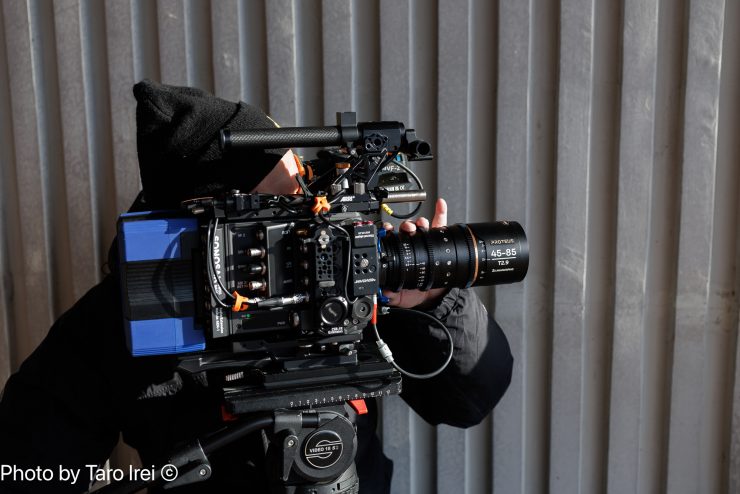
They are certainly softer out towards the edges of the frame, however, I personally thought that the sharpness drop-off wasn’t as big as I expected.
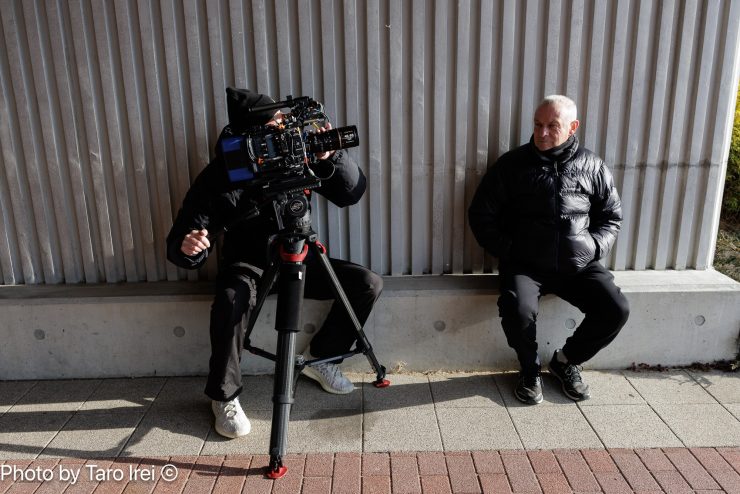
At wider focal lengths, there is some pincushion distortion, however, it isn’t too bad. If you are not familiar with pincushion distortion it is where straight lines bend or pinch inward from the center of the image. You will sometimes see pincushion distortion in images with straight lines, especially out toward the edges of the frame. The further the lines are away from the center of the image, the more noticeable the distortion. Pincushion distortion isn’t necessarily a bad thing with anamorphic lenses because if you are doing close focus with a wider focal length, you don’t want to have barrel distortion as that would make people’s faces look distorted.
Above you can see a sharpness comparison comparing the Laowa Proteus 45-85mm T2.9 2x Anamorphic zoom against the Blazar CATO 55mm T2 & 85mm T2.8 2x anamorphic primes.
As a comparison, above you can see sharpness tests done with some of the Proteus Primes.
In technical tests, a lot of anamorphic lenses are not going to win people over. One of the rare exceptions would be ARRI’s Master Anamorphics. Technical tests are more unforgiving than a lot of real-world shooting situations and they are done to look very closely at potential optical flaws. Zooming in 300% on an image is not something I am ever going to do in the real world, it is just pixel-peeping.
In the real world, most lenses are going to look a lot better than they will in technical tests. The reason I do tests like this is it gives you a benchmark when comparing other lenses. The robot has a very fine pattern on its surface and this is very helpful in seeing sharpness, detail, micro-contrast, etc.
Lens Breathing
I tested out the zooms by doing large focus throws and there is certainly breathing in the form of vertical stretching when using the lenses wide open, but for 2x anamorphic lenses at this price, that is to be expected. If you stop down to T5.6 the breathing is minimized.
Anamorphic breathing appears in a different way than when using a normal spherical lens. With a spherical lens, breathing gives the appearance that the focal length is changing. However, with anamorphic lenses, vertical stretching occurs with the background. So when you adjust focus from something close to something further away, the background takes on a squeezed appearance, hence why you see oval instead of round bokeh.
With anamorphic lenses, the more you stop the lens down, the less the out-of-focus object’s appearance will change. If you shoot wide open and pull focus the out-of-focus objects will change shape more dramatically.
Older anamorphic lenses such as Lomo’s and Kowa’s can breathe a lot. Newer anamorphic designs from companies such as Zeiss and Cooke have a lot less breathing. The popular Panavision E Series anamorphic lenses retain true anamorphic artifacts such as disproportional vertical focus breathing.
As a comparison, above you can see a focus breathing test using the Proteus 35mm T2 prime.
Flare
Let’s face it, the reason a lot of people want to use anamorphic lenses is because of the interesting flares you can obtain. Yes, they can be overly used, and sometimes less is more.
Used wide open, or relatively wide open, you do get that streak that everyone is familiar with. The lenses I was testing were the amber version so the flares take on a warmer tone. Whether you prefer a blue streak, amber streak, or a more neutral steak is again a personal thing.
Personally, sometimes I like to use lenses like these in combination with something like glimmer glass to soften the streaks.
A strong blue streak might be fine if you are shooting a Sci-fi movie, but it can be very distracting for a lot of other content. Sometimes less is more.
Out of the two zooms I actually preferred the flare I was getting on the 45-85mm, but again, flare is a very personal thing.
The lenses maintain reasonably good contrast when a lot of direct light is shining down the barrel.
Again, as a comparison, above you can see some flare tests that I did with the Proteus primes. Please note that the Primes I was testing were the silver flare option.
Chromatic Aberration
The lenses do show very slight signs of chromatic aberration when used wide open and at T2.9. Above you can see 300% crops at T2.9. As you can see there is a tiny bit of color fringing in high-contrast areas, but it is very well controlled.
In my test footage further down in the review you will get a slightly better sense of how much chromatic aberration there is.
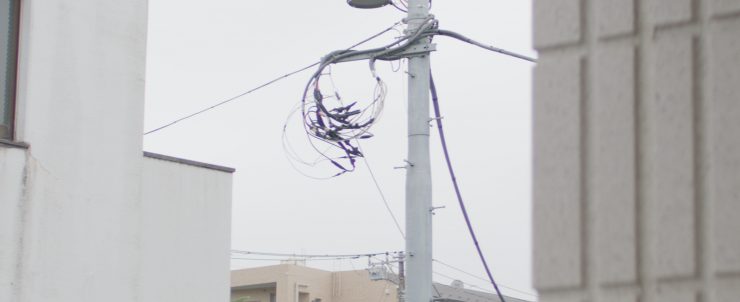

T2.8 
T4
As a comparison, above you can see the chromatic aberration when using the Proteus 85mm T2 prime.
Bokeh
Oval-shaped bokeh is another drawcard of anamorphic lenses. The ability to create interesting-looking out-of-focus areas can certainly be used to help to enhance a shot. I personally prefer out-of-focus areas in the foreground rather than the background when using lenses like this.
The bokeh is what you would expect for 2x anamorphic lenses with a T2.9 aperture. It has that nice oval appearance.
As a comparison, above you can see a bokeh test with the Proteus 35mm T2.
Real World Use
I took the lenses out and shot some quick test footage so that you could see the general look and characteristics of the lenses. The footage was cropped for 2.39:1.
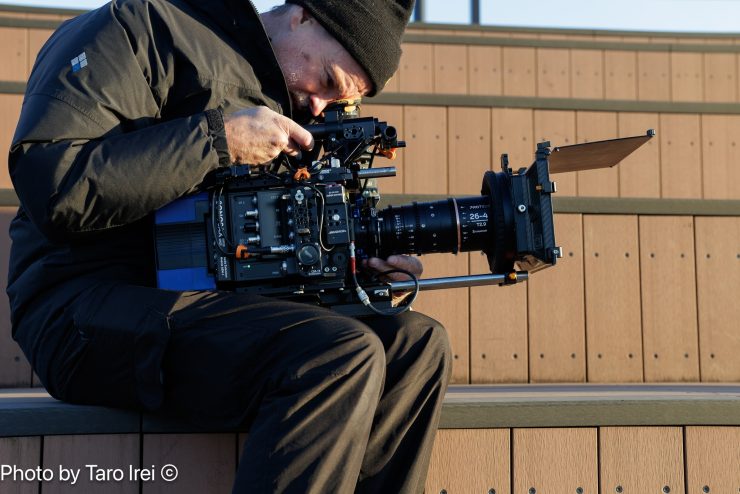
I enjoyed using the lenses and I generally liked the images I was getting from them. They have character without being over the top and they have a nice amount of sharpness and pleasing bokeh. They have very little chromatic aberration when used wide open in highly contrasty conditions.
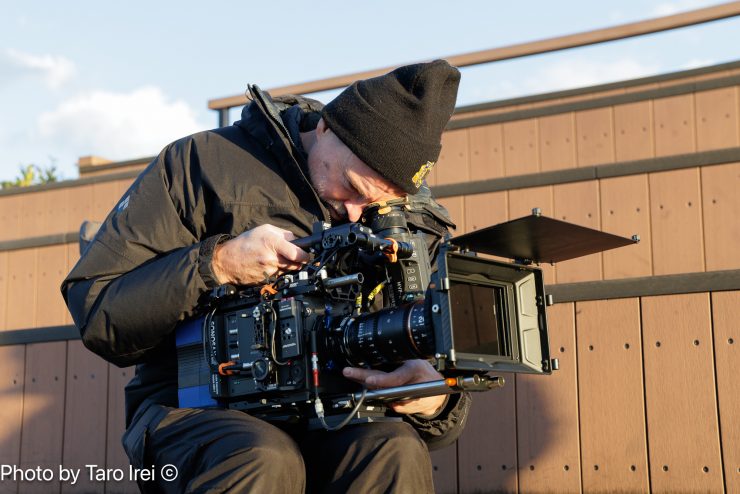
The mechanics of the lenses make them easy to use and they certainly provide you with that ‘look’ that you would typically associate with a 2x anamorphic.
The lenses are perhaps a little more clinical than some other anamorphic options on the market, but you know what, I hardly think that is a negative. They can easily be used wide open at T2.9 as they provide good levels of sharpness, which is something other anamorphic lenses do struggle with. Sharpness does improve when you stop the lenses down.
As a comparison, above is some test footage using the Proteus primes.
Do they match?
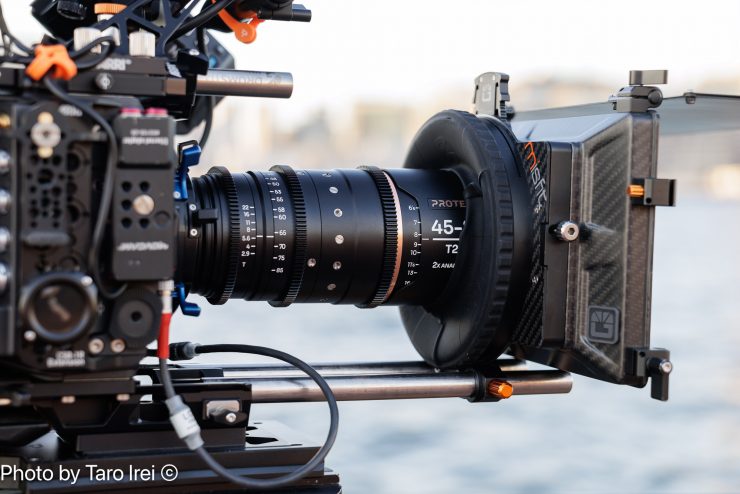
With some of the ‘affordable’ anamorphic lenses on the market, the look and build quality between focal lengths can vary quite dramatically. It was nice to see that the build quality and general look of all the lenses remained consistent. If you are going to buy a set of lenses, you want them to match as closely as possible.
I am not sure how well they match the Proteus primes as I didn’t have access to those at the time of this test.
Can you get wide enough?
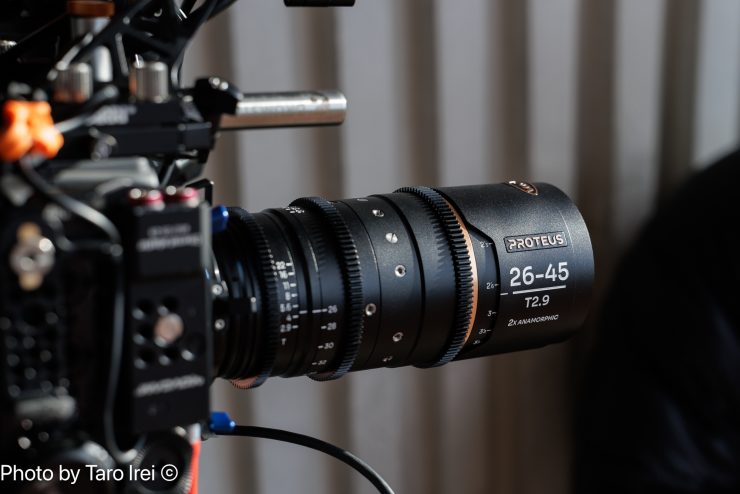
With the widest focal length being 26mm, you may well be asking, is that wide enough? A 26mm 2x anamorphic lens has the equivalent field of view of a 13mm lens. What you do need to remember is that you are getting a 13mm horizontal field of view, but you are losing information vertically. Wide angle anamorphic lenses of less than 40 mm focal length produce a cylindrical-perspective which some people like, and others hate.
If you wanted to go even wider, you could always use the Proteus 20mm prime.
Price & Availability
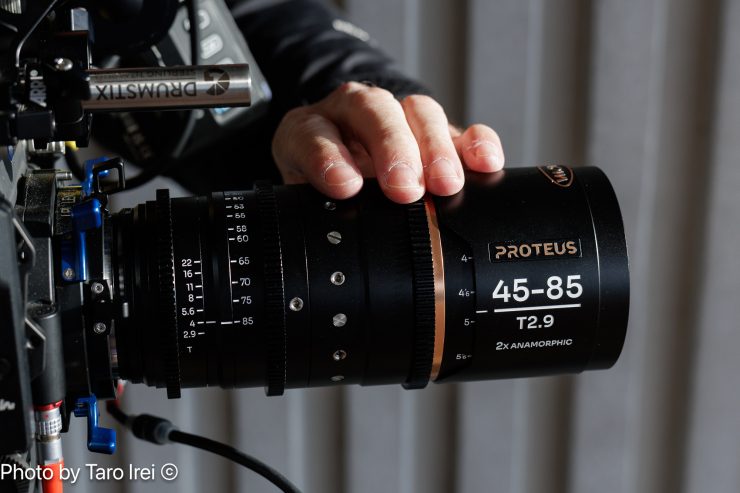
The Proteus 2x anamorphic zooms retail for $5,999 USD each and a 2-lens set is $10,999 USD.
At least in my opinion, these lenses don’t have any direct competition at their price.
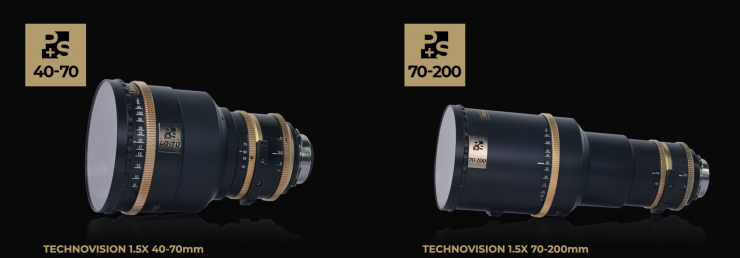
A lot of the anamorphic zooms you can purchase tend to have a 1.5x squeeze. Laowa has its 1.5x Nanomorph zooms, and there are the P+S Technic TECHNOVISION 1.5X Zooms.
The Laowa Proteus series certainly offers very good value for money given their optical performance and build quality.
Do you really need an anamorphic lens?
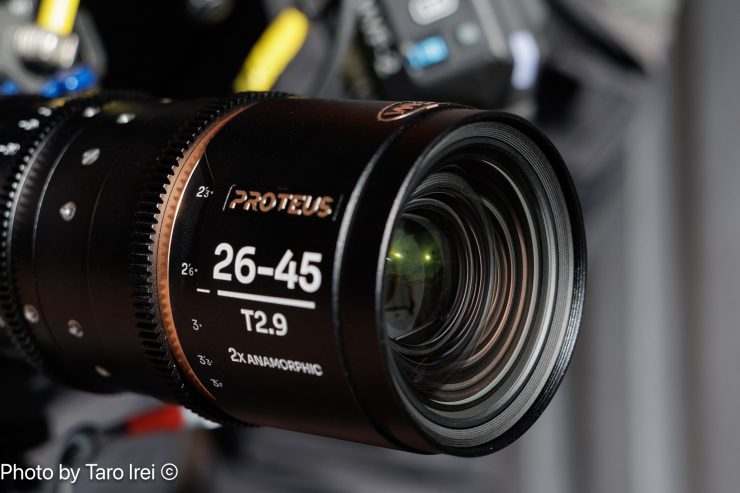
I think in principle a lot of people like the idea of shooting with anamorphic lenses, but whether or not you actually need to is maybe a completely different story. Depending on what you do there may well be little to no demand to shoot anamorphic. For a lot of shooters, it makes more sense to rent anamorphic lenses rather than to own them, however, with quite a few budget-friendly options now on the market, they are affordable enough to purchase. The Proteus series certainly fits that bill, especially for owners of mid to high-level digital cinema cameras.
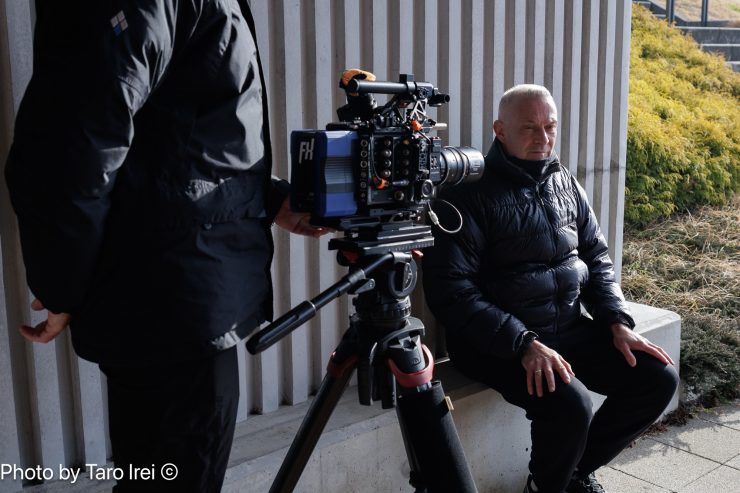
While you may find the look of anamorphic esthetically pleasing, in the past, a lot of shows would not shoot anamorphic for broadcast television, simply because the broadcasters don’t want viewers complaining about black bars on top and below the image.
However, with more and more online content being created by Netflix, Amazon, Disney, etc. this isn’t really an issue anymore. Online streaming entities are often more than happy to have productions shoot with anamorphic lenses and the 2:1 aspect ratio has become an increasingly popular delivery format for Netflix. If you produce content that will end up in a widescreen aspect ratio you could easily mix anamorphic and other spherical lenses together. Also if you are making your own content then go for your life and use whatever you like.
In my honest opinion, it can be better to just rent good anamorphic lenses for projects that require them. However, buying affordable anamorphic lenses makes sense if you are someone who is going to use them a lot for the type of work you do. The Proteus series is sure to appeal to both owner/operators and rental houses.
Conclusion
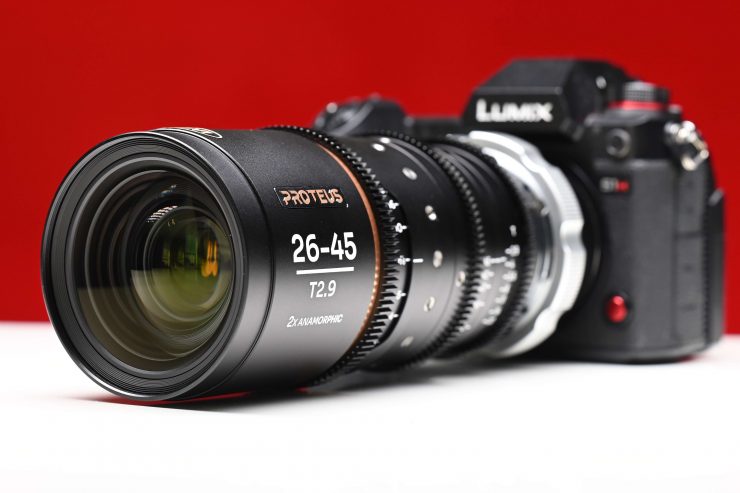
Laowa has been knocking it out of the park lately, and they are bringing so many new and sometimes unique lenses to the market. As I previously mentioned when I reviewed the primes, the Proteus series feels like a more serious effort at producing proper cine anamorphic lenses. They are very competitively priced for 2x anamorphic lenses, especially zooms, and furthermore, at this price point, they don’t have any direct competition.
In the past, I have generally been pretty disappointed with most so-called ‘affordable’ anamorphic lenses, although there have been some exceptions. The trouble was those exceptions were plagued by inconsistencies with the look, build quality, and mechanics. The Proteus series certainly bucks that trend and if you are after a cleaner and sharper-looking anamorphic lens that won’t cost more than a good car, then these are the only game in town.

The Proteus zooms, just like the primes, are well made, and they are far and away a lot better than anything else I have seen or used when it comes to relatively affordable anamorphic lenses.
They certainly punch well above their weight and I think Laowa has done a very good job at coming up with 2x anamorphic primes and zooms that are very much underrated and probably not appreciated as much as they should be.
Anamorphic lenses are hard to review. Sure, I can talk about the technical aspects of a lens, but technical perfection is not what most DPs look for when choosing an anamorphic. The character and unique look of a lens are why certain anamorphic lenses are more popular than others. Unless you are after something that is super clean like an ARRI Master Anamorphic, the preference is usually to find and use a lens that has lots of character. The Proteus series is what I would describe as modern anamorphic lenses. They don’t have tons of character, but in saying that, they aren’t too sterile either. I really hate using the word character, because what does that actually mean? There are a lot of instances, although this does depend on the type of work you do, where having lenses with ‘character’ is not going to suit the project. I personally prefer to use cleaner lenses and then alter them with filters or in post, but that’s just me. Everyone has different needs and requirements and there is no right or wrong choice. Having a cleaner-looking anamorphic can also help if you need to mix and match it with spherical lenses.
In the past, anamorphic lenses were predominantly rental items for a lot of shooters, simply because the cost of ownership was so high, but over the last 3-4 years a lot of affordable options have come to market. I can see more and more people starting to purchase anamorphic lenses instead of renting them.
Lenses can have different characteristics when used on different cameras, and it is important to try out both the lens you want on the cameras you own or use.
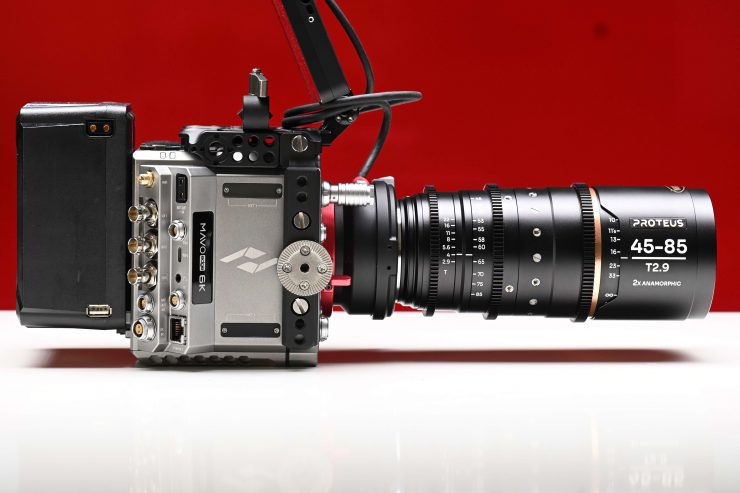
The Proteus series strikes a very good balance between affordability, image quality, and consistency. It is great to see another company bring out 2x anamorphic lenses when the trend is to go with 1.5x or 1.8x. Laowa is also the first company to make what I would consider ‘affordable’ anamorphic zooms and that is certainly going to set them apart.



